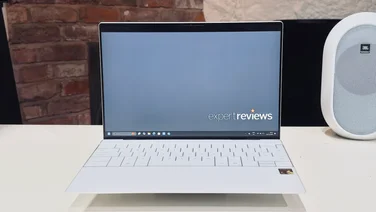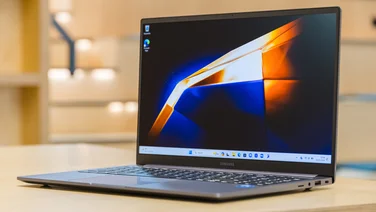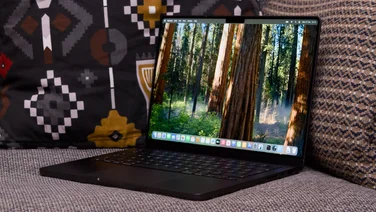To help us provide you with free impartial advice, we may earn a commission if you buy through links on our site. Learn more






The ThinkPad laptop range is essentially the de facto standard for professionals. It’s been around in one form or another for over 20 years, but until now their uniform appearance and business-centric features haven’t exactly resulted in mass market appeal. That could all change with the ThinkPad X1 Carbon Ultrabook, however, which is arguably the best looking ThinkPad laptop ever.

Built from a combination of soft-touch plastic and tough-yet-lightweight carbon fibre, the X1 Carbon weighs a miniscule 1.3kg and is ideal for frequent travellers that like to stay light when on the move. Only 18mm at its thickest point, it’s the perfect size for slipping in and out of a laptop bag. Despite its size, it still feels incredibly sturdy. There’s only a small bit of flex in the screen and keyboard tray, with the rest of the machine showing very little give or bend.
The keyboard was a source of much discussion in the office. Some people thought it was one of the best they’d ever had the pleasure to use on a laptop, but others thought the keys felt sticky at times. The consensus was that Lenovo had done an excellent job creating keys with so much travel in an ultra-thin laptop, using Chiclet-style keys that were firm and responsive.
The entire keyboard tray is backlit with incredibly bright white LEDs, meaning we had no trouble working in low lighting conditions.

We also liked the all-in-one touchpad, which worked incredibly well despite the absence of physical buttons. It’s a comfortable size, albeit a little close to the edge of the chassis, with a satisfying click that lets you know when your inputs have registered. It fully supports multitouch gestures and sensitivity was spot-on. Of course, as this is a Lenovo laptop, you also have the option to use the integrated touch stick instead of the touchpad. It takes some getting used to if you haven’t used one before, but Lenovo veterans will appreciate its inclusion.

The display is a step above most of the competition, too. Lenovo has fitted a 14in, 1,600×900 display into a chassis roughly the same size as most 13in laptops, and it feels expansive. The extra resolution makes it easy to work on two documents side-by-side, and although the TN panel has only average viewing angles, the screen will tilt completely flat, so finding a working position shouldn’t be a problem. The matt finish helps reduce light reflections without dimming colour reproduction, so images look vibrant. It’s not quite as bright as Samsung’s Series 9 display, or up to the same high standard as the Asus ZenBook Prime UX31A, but it’s still one of the better Ultrabook displays we’ve seen.

Understandably for such a thin laptop, even by Ultrabook standards, the X1 Carbon is light on connectivity. Besides the two USB ports, 3.5mm combination audio jack and multiformat card reader, Lenovo has used mini DisplayPort for video output instead of HDMI. It might be more common in a business setting, but it means you’ll need an adaptor to run the laptop through a TV. It would also have been nice if both USB ports supported the faster USB3 standard, but unfortunately only one does. The other is a slower USB2 variant. There’s also an integrated 3G modem for wireless internet access, although you’ll need to pay extra to use it.
Inside, the Intel Core i5-3427U processor runs each of its two cores at 1.8GHz, but can reach 2.8GHz using Turbo Boost. It’s paired with 8GB of (non-removable) RAM and a 256GB SSD, so understandably it sped through our multimedia benchmarks with an overall score of 55. That isn’t quite as fast as some Core i7-powered Ultrabooks, but it’s still more than quick enough for all your everyday applications. The extra memory will help with larger applications such as databases too.
Clearly, the X1 Carbon wasn’t built as a gaming laptop, so it should come as no surprise that it relies on the integrated graphics chip built into the processor for video and 3D rendering performance. Intel’s HD 4000 might be a step up from the previous generation, but it still struggles in newer games. Our Dirt 3 test finished with a choppy average frame rate of 19.7fps. That’s a slight step up from other Ultrabooks we’ve seen, but mostly because our review sample was using a faster processor. If you opt for the less expensive X1 with a Core i5-3317U, you should expect gaming performance to be around 10 per cent slower depending on the title.

The main benefit from opting for integrated graphics is that they’re much more forgiving on battery life. The ThinkPad X1 Carbon performed admirably in our light-use test, managing a little under eight hours away from the mains. You should be able to get a full working day out of a single charge if you stick to light tasks.
It’s difficult to recommend the X1 Carbon to anyone needing a laptop purely for home use; you’d be paying extra for features that you wouldn’t need, such as the integrated 3G modem and vPro compatibility, and would perhaps be better off with the Samsung Series 9, but for business users there’s almost nothing to fault here. It’s fantastic to use, packed with useful features and software, powerful and long-lasting. If you’re after a new business workhorse, this should be it.






